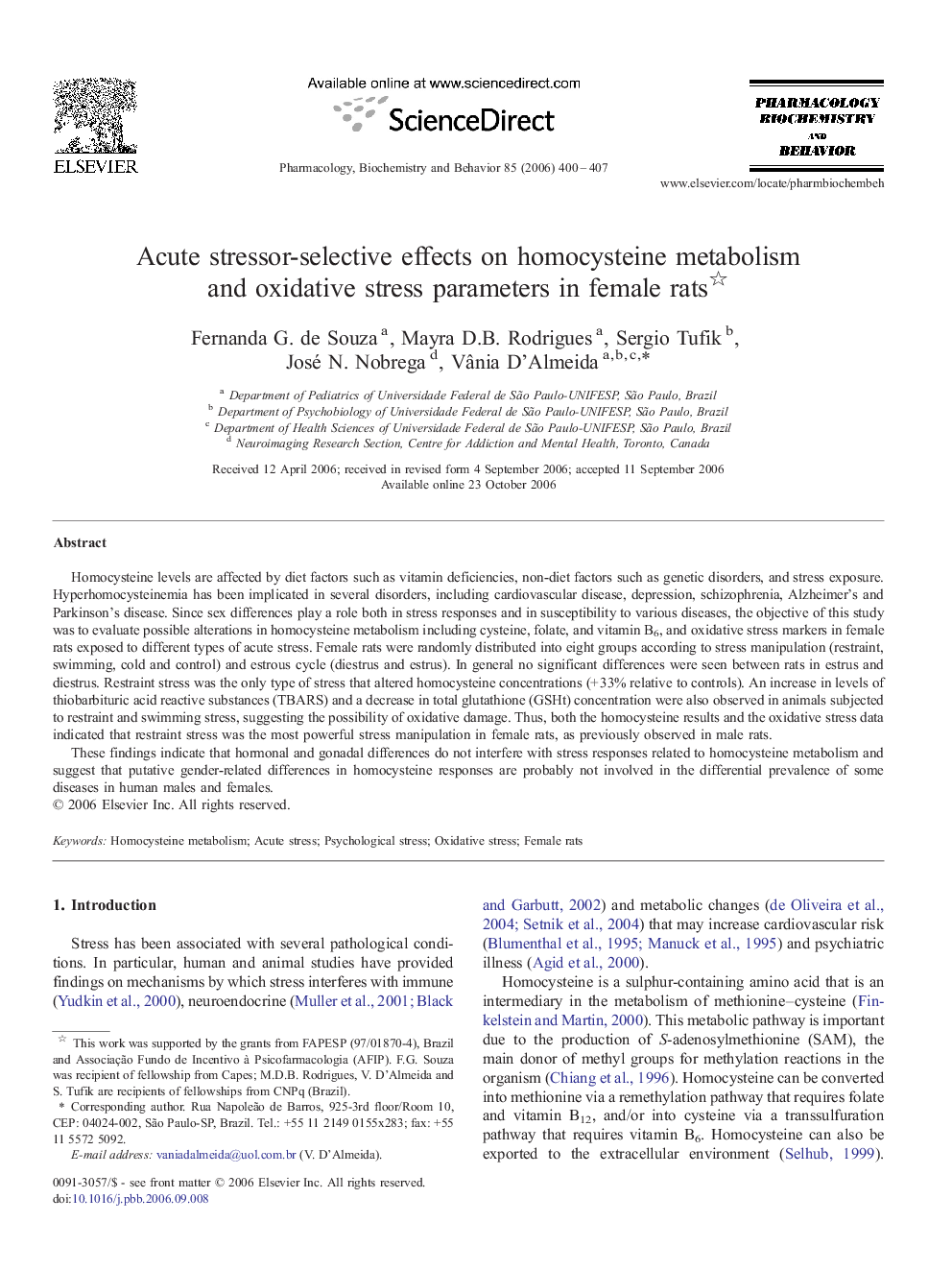| Article ID | Journal | Published Year | Pages | File Type |
|---|---|---|---|---|
| 2014193 | Pharmacology Biochemistry and Behavior | 2006 | 8 Pages |
Homocysteine levels are affected by diet factors such as vitamin deficiencies, non-diet factors such as genetic disorders, and stress exposure. Hyperhomocysteinemia has been implicated in several disorders, including cardiovascular disease, depression, schizophrenia, Alzheimer's and Parkinson's disease. Since sex differences play a role both in stress responses and in susceptibility to various diseases, the objective of this study was to evaluate possible alterations in homocysteine metabolism including cysteine, folate, and vitamin B6, and oxidative stress markers in female rats exposed to different types of acute stress. Female rats were randomly distributed into eight groups according to stress manipulation (restraint, swimming, cold and control) and estrous cycle (diestrus and estrus). In general no significant differences were seen between rats in estrus and diestrus. Restraint stress was the only type of stress that altered homocysteine concentrations (+ 33% relative to controls). An increase in levels of thiobarbituric acid reactive substances (TBARS) and a decrease in total glutathione (GSHt) concentration were also observed in animals subjected to restraint and swimming stress, suggesting the possibility of oxidative damage. Thus, both the homocysteine results and the oxidative stress data indicated that restraint stress was the most powerful stress manipulation in female rats, as previously observed in male rats.These findings indicate that hormonal and gonadal differences do not interfere with stress responses related to homocysteine metabolism and suggest that putative gender-related differences in homocysteine responses are probably not involved in the differential prevalence of some diseases in human males and females.
